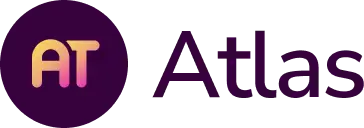Competency-based learning and assessment, a low humming buzz in progressive education since the 1980s, has evolved into various forms like standards-based grading, proficiency-based, and mastery-based. Career and Technical Education (CTE) programs have embraced this approach, aligning naturally with their standards-based courses.
In CTE, students use grades as a learning tool, understanding their progress without facing penalties for incorrect answers. The shift is away from traditional grading, with a focus on assessment and feedback as an ongoing conversation for student growth.
Reflecting on the pre-COVID increase in online learning, competency-based grading gained traction beyond CTE classrooms. The pandemic accelerated this trend as teachers grappled with remote learning challenges, questioning the purpose of assignments: grading or learning? Many unofficially adopted a competency-based model, formalizing it as a reflection on virtual learning experiences.
Shifting to competency-based models requires re-education and curriculum evaluation. This shift isn't exclusive to CTE; it's applicable across content areas. The key is structuring instruction and assessment to help students understand their progress and what's needed for the next level.
Beyond competency-based grading, some advocate for the anti-grading movement. A Portland choir teacher, John Eisemann, implements a unique approach. All students receive an "A," emphasizing intrinsic motivation for learning in artistic classes. This model, inspired by the Generals LEAD philosophy and National Core Arts Standards, focuses on evaluations aligned with course goals and frequent self-assessment, aiming to foster a genuine desire for improvement.
Competency-based grading, whether in CTE or other content areas, represents a positive shift in education, emphasizing understanding over traditional grading metrics. Teachers, like Eisemann, showcase how customization can blend traditional and competency-based grading, fostering a supportive learning environment where grades serve as tools for improvement, not penalties.
References
Bellingar, T. (Host). (2021, August). Evidence Based Reporting with Bernard Brown [Audio podcast episode]. In Career and Technical Education - Competency Based Instruction. Production Company. https://open.spotify.com/episode/2AIOgEedioBRImx9i32QNr?si=01e50375a6444984
Nodine, T. R. (2016). How did we get here? A brief history of competency-based Higher Education in the United States. The Journal of Competency-Based Education, 1(1), 5–11. https://doi.org/10.1002/cbe2.1004
Spencer, K. (2017, August 11). A New Kind of Classroom: No Grades, No Failing, No Hurry. The New York Times. Retrieved February 14, 2022, from https://www.nytimes.com/2017/08/11/nyregion/mastery-based-learning-no-grades.html
About The Author
Kelly Jensen is a Professional Development Content Specialist with Faria Education Group, based in Portland, Oregon. She works with educators domestically and internationally, facilitating conversations about curriculum development and pedagogy. Kelly also takes great pride in creating resources and content to support the individual growth of educators. Her first experience in education was teaching secondary Humanities and Dance, and she has since supported public schools as lead teacher, committee chair, and program director. Kelly earned her Bachelor of Arts in English and her Masters in Teaching from Washington State University.


